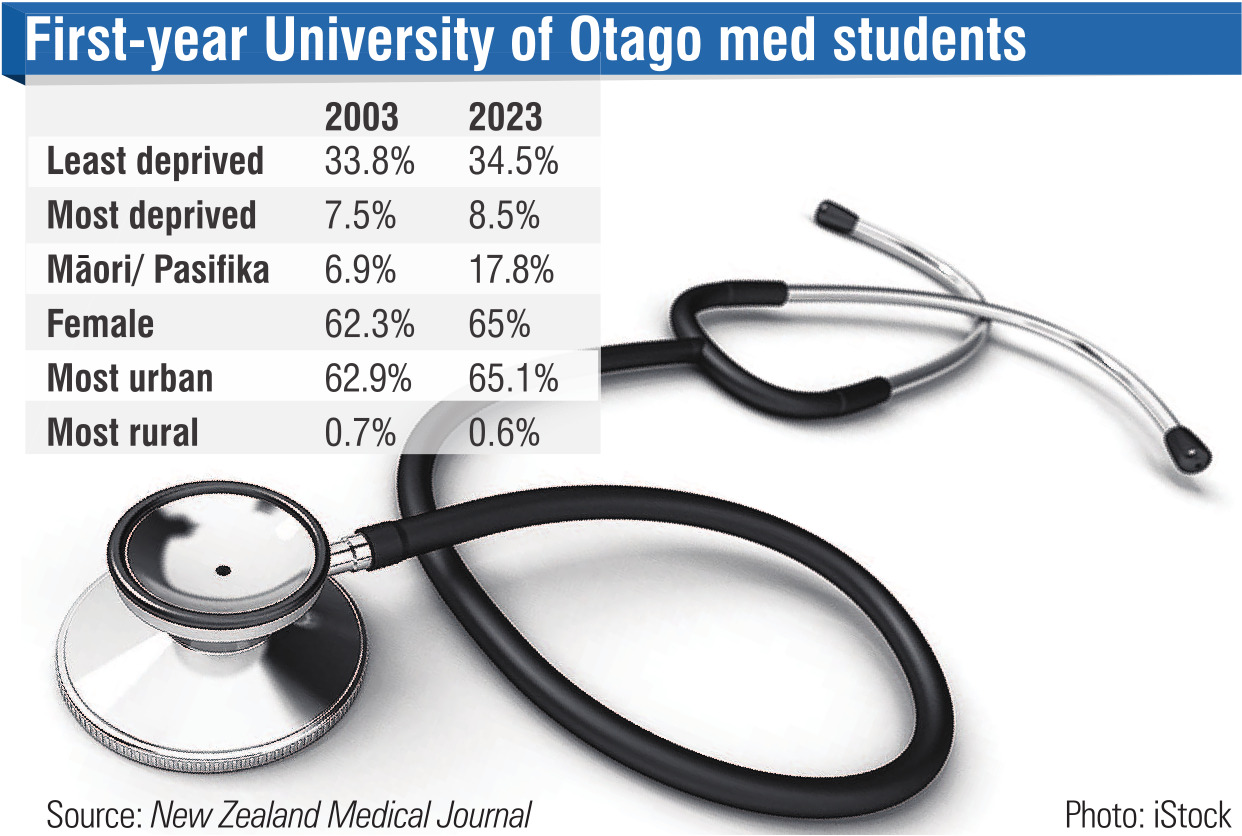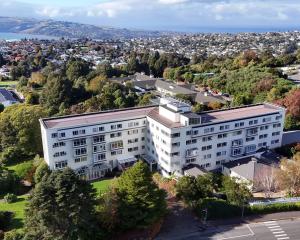
The report published in today’s issue of the New Zealand Medical Journal came off the back of a wide-ranging demographic study on the effectiveness of the university’s special pathways programmes.
It examined the demographic makeup of students who were New Zealand citizens or permanent residents.
People from lower socio-economic backgrounds faced significant barriers to entering medical school, the report said.
"Analyses of socio-economic measures paint a consistently bleak picture of stratified educational opportunity that persisted and, if anything, worsened over time.
"The near-exclusion of students from schools in the lowest socio-economic quintile across essentially all of our analyses is a notable finding that should prompt reflection as to how our education system and society marginalise such students, and fail to enable them to pursue tertiary education at anywhere near the level of their more socio-economically advantaged peers."
Report author Prof Peter Crampton told the Otago Daily Times yesterday these findings were worrying.

Socio-economic backgrounds were measured based on the old school decile system and the deprivation index.
"I think that there needs to be a deep and thorough conversation more widely in New Zealand society about whose needs are being served by universities and whose are not."
Prof Crampton said students from the "most deprived" backgrounds made up 7.5% of the medical school students in 2003, but despite special pathway programmes for students from low socio-economic backgrounds, this representation had increased by only 1 percentage point to 8.5% by 2023.
People from the "least deprived" backgrounds made up 33.8% of the cohort in 2003 and 34.5% in 2023.
"The marked social inequity about who goes to university determined by the postcode, essentially, I find totally unacceptable and also highly disadvantageous for the wider New Zealand society."
While there are no specific pathways for female medical students, there has been a focus across the board on promoting women in medicine.
This has led to the proportion of female medical students increasing from 62% in 2003 to 65% last year.
Prof Crampton said these figures were roughly in line with the "increasing feminisation" of tertiary study in general and would need to be analysed in greater depth.
"I think there needs to be a conversation.
"I’m inclined to listen to the wisdom of others on this point because I think it’s quite complex and very, very important."
Meanwhile, the study also showed Maori and indigenous Pacific representation in medical school had increased from about 6.9% in 2003 to 17.5% last year.
This compares against the 2023 census results, which showed more than 25% of the population identified as either Maori or indigenous Pacific.
Prof Crampton said the trends were nonetheless "encouraging" and more work needed to be done to promote medicine and tertiary education to these demographics.
"It means constructing courses and programmes and the ethos of the university, which make it attractive for those students to want to come to university.
"It means supporting them before they come through the door of the university and while they’re in the university, particularly in the early years, but also all the way through to completion."
The pathway programmes have existed in their present form since 1994, although there have been affirmative action pathways at the university since 1951.
The university’s present policy, Te Kauae Parāoa, applies to eight health professional programmes and aims to help the entry of students who are Māori, indigenous Pacific, from rural backgrounds, from refugee backgrounds or who studied at schools that serve communities with higher socio-economic disadvantage.
The pathways programmes came under scrutiny last year, when Act New Zealand leader David Seymour criticised them and eventually managed to secure a review, led by Health Minister Shane Reti, as part of the coalition agreement.
A spokesperson for Dr Reti said the government was committed to examining the scheme to determine if they were delivering the desired outcomes as per the coalition agreement.
This work was still in its preliminary stages and was expected to be undertaken next year, the spokesperson said.












